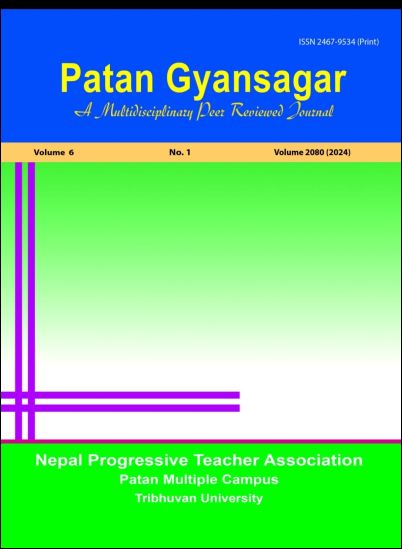Situation of Gender-Biased Sex Selection in Nepal
DOI:
https://doi.org/10.3126/pg.v6i1.67643Keywords:
Sex selective abortion, son preference, abortion policy, missing girls, demographic impactsAbstract
About 140 million women are believed to be "missing" around the world due to the result of son preference. Gender-biased sex selection (GBSS) in favor of sons is a manifestation of gender inequality that is deeply embedded in our society by tradition, culture, religion, social, economic and legal injustices that undervalue girls and women. This paper tries to discuss on the gender-biased sex selection (GBSS) in favor of sons. Similarly, the study is based on descriptive as well as analytical research design. The sources of information have been based on secondary data. The facts and figures have been presented into tabular form. Several districts showed significantly skewed sex ratio at birth (SRBs) at 110 or above with Kaski, Arghakhanchi and Bhaktapur, province one and Lumbini province having the highest SRBs in Nepal. Youngest age groups at the bottom under 30 years of 5year age groups of female population are low in 2021 census. The Nepali context makes pervasive use of sex-selection likely as strong son preference. Sons are seen as economic, social and religious assets and in some parts of the country while females are seen as a burden due to the expenses involved in marriage. Fertility decline means that couples feel pressure to bear a son at a low parity. The technology of sex-selective abortion is accessible to the Nepalis. Even though prenatal sex determination and abortion based on sex selection are prohibited and may incur severe penalties in Nepal under the current abortion law passed in 2002. Nepal provides abortion was legalized in 2002 and prior to that, there was no evidence of sex-selective abortion. SSA was made a punishable offence when exceptions for legal abortion were introduced by the eleventh amendment to the Nepal’s Muluki Ain in 2002. Consequences of the ‘missing females’ become long term demographic impact and also result in ‘excess males’ who struggle to marry in society.




